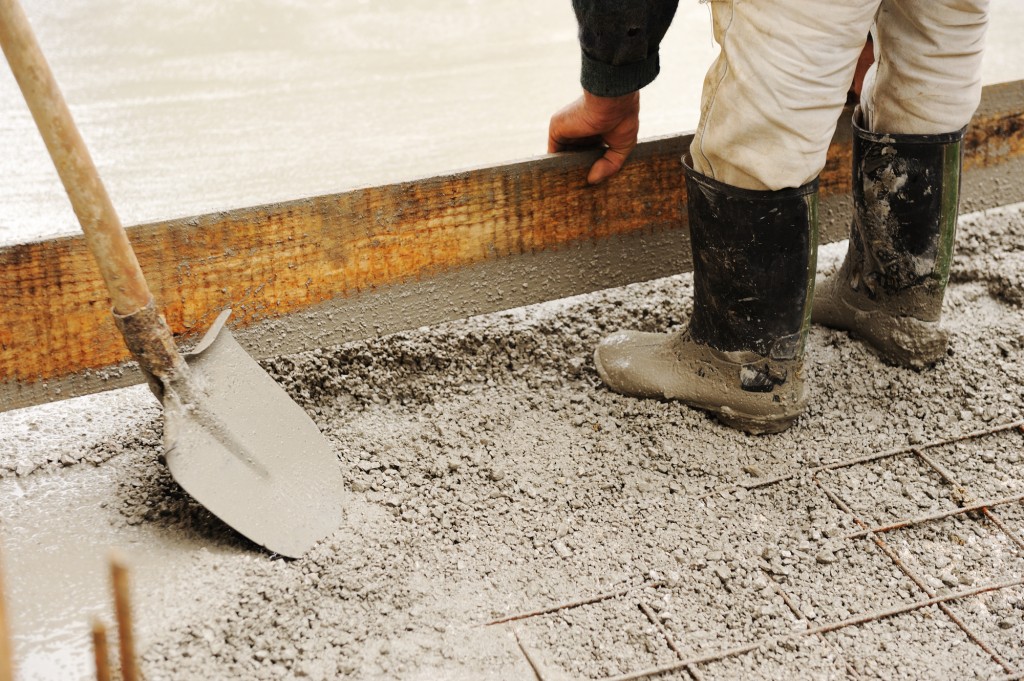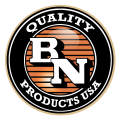
Building with concrete is the most important component of construction. At the very least, every home, commercial building, structure and edifice requires a foundation and/or footings. There are about a dozen critical tools for pouring footings, foundations and finishing flat work. Every concrete job will require the following:
Excavating Tools
- Shovels – preferably both spades and flatheads. Without a shovel, a concrete job is dead in the water. Whether it is leveling the grade beneath the forms, filling in the spaces between the form and the ground on grade, filling wheelbarrows, filling buckets with sand or aggregate to fill a mixer, mixing concrete, cleaning up a spill, the tasks within a concrete job that require a shovel are countless.
- Wheelbarrow – The fastest way to move material manually, with very few exceptions, almost every job site requires a wheelbarrow.
- Pick Ax – Breaking up compacted dirt or rocky soil with a pick ax is often the preamble of shoveling. Tearing up the ground before shoveling makes the process exponentially faster.
- Digging Bar – A digging bar simply can not be replaced. When you require a great deal of leverage, only a digging bar will do. Also, they are good for breaking up hard ground in tight fit areas like the holes required for forming tubes.
Forming Tools
- Tool Belt – A good tool belt is required to remain organized while working.
- Tape Measure and Long Tape – Arguably the most important tool on any jobsite, a tape measure is used for determining the lengths of forms, for keeping the forms square and for checking your work. A long tape serves the same purpose and is necessary when the lengths exceed that of the tape measure.
- Building Square – Square and plumb being the most important aspect of building with concrete, a building square is used to keep forms perfectly perpendicular to once another.
- Two-foot and Rocket Level – Levels are necessary for checking — the level of the forms and checking for plumb.
- Hammer and Hand Maul – While most contractors now use hand drills and decking screws to assemble their forms, hammers are still necessary for all kinds of different situations, particularly when stripping the forms. Additionally, a hammer is required to tap the sides of the forms in order to settle the concrete and release trapped air stuck between the concrete and the forms. A hand maul is necessary for driving in stakes and busting them loose once the concrete cures.
- Pliers and Wire Cutters – Tying rebar and the tie wire in between the forms requires pliers. Mistakes require wire cutters as does pulling the forms once the concrete cures.
- Crowbar – From everything to pulling nails and pulling forms to gaining the leverage required to lift or torque forms, crowbars are essential tools for building with concrete.
- Rebar Bender – With the exception of slabs poured over wire mesh, almost every concrete job — with the exception of very small jobs or specialty projects — requires rebar.
- Electric Drill – While hammering nails into the forms is still a suitable means of attaching forms to one another and to the cleats and stakes, a drill is much faster, less labor intensive, and more precise.
- Circular Saw – A circular saw is necessary for cutting the forms to length.
Finishing Tools
- Concrete Vibrator – While not essential, vibrators ensure a solid, airless concrete cure. A simple stick can be used to serve the same purpose, but it is not as efficient nor effective.
- Aluminum Straight Edge – A straight edge is necessary during the pour. Once the concrete is settled relatively flat with the vibrator, the straight edge is used to level the concrete to a greater degree. The width between forms will determine the length required.
- Trowel – A trowel is used to smooth the concrete and create a semi-slick finish.
- Edger – An edger is used to add a nice, round edge to the sides of a concrete job.
- Groover – A groover is used for pads and sidewalks. The soft fault line created is the first to crack if the concrete is stressed as it settles. The crack inside the groove, it is hidden from view.
- Floats – Floats are used to give concrete a slick finish. A float is used last, after the straight edge, trowel, edger and groover.
Although building with concrete may seem like a grueling task with many needed tools, it can be quite easy if you have all of the essentials. Contact our team at BN Products today and we will get your started with your project.


